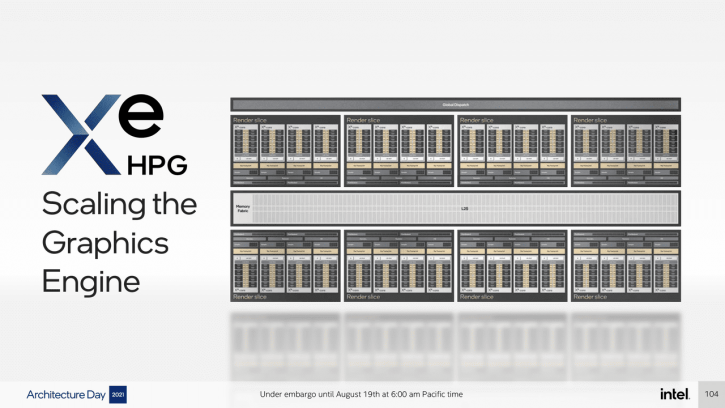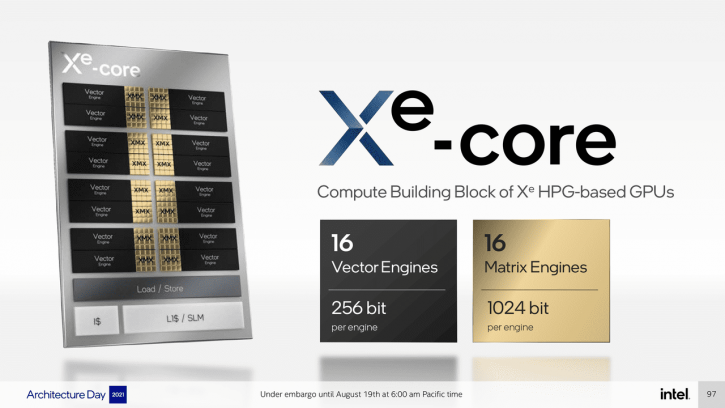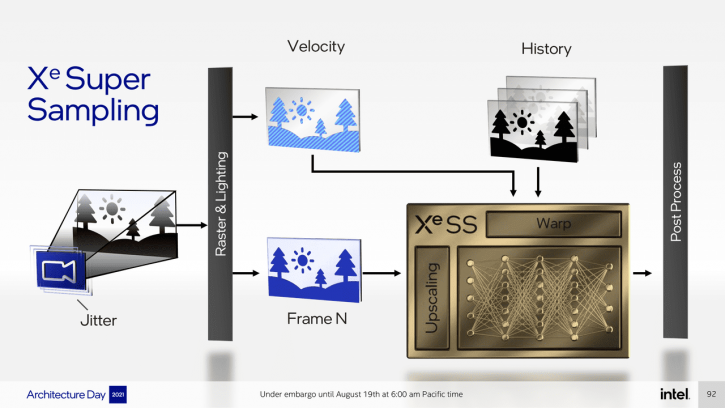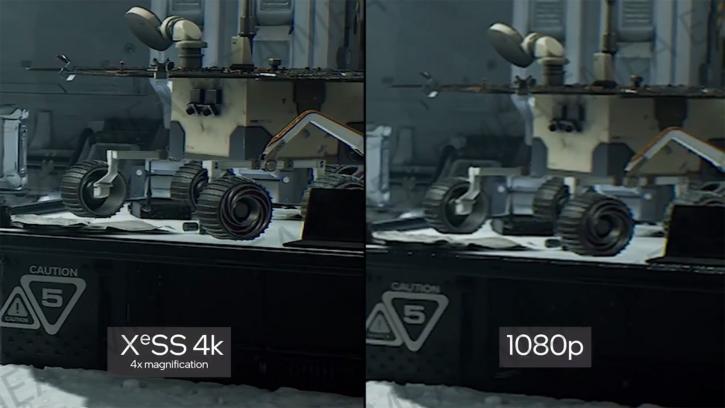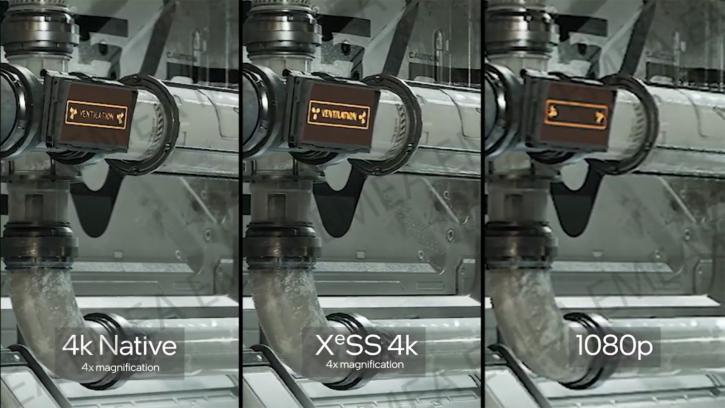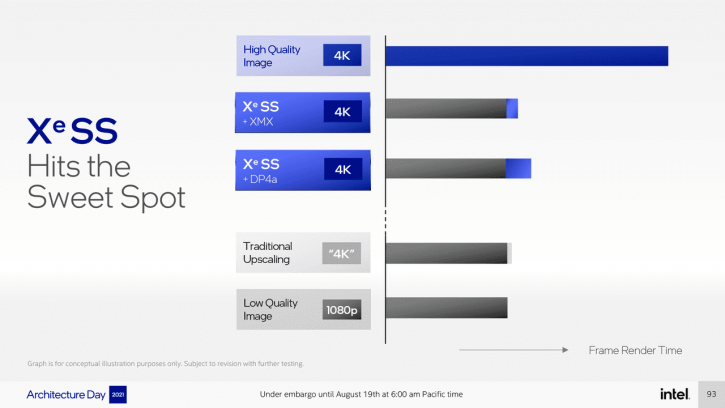Intel Architecture day 2021 page 1 - Xe and XeSS
Intel Architecture day 2021
Intel conducted their annual Architecture Day 2021 event, where they shared a plethora of information on forthcoming products such as Alder Lake processors, which will be released later this year, and Xe-based Alchemy GPU devices, which will be released in early 2021. Xe and XeSS are discussed in this article. In this post, we'll go over what you can expect from Alder Lake, Xe Core-based GPUs in terms of design, as well as Intel's new deep learning-based DLSS alternative, XeSS, which will be released later this year.
Intel Xe architecture
We are now moving on to Intel's graphics processing unit (GPU). When Raja Koduri made the decision to leave AMD and join Intel, we all knew that something intriguing was about to happen and on a number of different fronts. Koduri had huge ideas for the Xe GPU architecture, which would be used in laptops, desktops, and the data center, among other things.
For us Gurus, we are all focused on the desktop gaming side of things, and this week there have been some early statements in this regard. ARC will take over the naming rights to Xe in early 2021, with the first product series codenamed Alchemist serving as a launchpad for the new brand. Following that, Intel stated that it will enable hardware raytracing as well as machine learning super sampling, which will be referred to as XeSS for Intel, as DLSS is for NVIDIA. When it comes to high-end to enthusiast graphics cards, Intel Alchemist, previously known as DG2, may be able to compete on a level playing field with the best of the best on the market. Intel will have to perform admirably with their graphics drivers and software stacks as well, and it is not only hardware that will be tested.
Rather than being a single graphics card, Intel Alchemist is a collection of graphics cards from Intel. According to Intel's official documentation, they will be segmented first and foremost by the Execution Unit (EU), which acts as the fundamental building block of the company's visual computing capabilities.
Intel revealed the brand for its upcoming consumer high-performance graphics products: Intel Arc. The Arc brand will cover hardware, software, and services, and will span multiple hardware generations, with the first generation, based on the Xe HPG microarchitecture, code-named Alchemist (formerly known as DG2).
Intel Arc is the graphics card series naming much like "GeForce and Radeon", and an attempt to compete with the AMD Radeon and NVIDIA GeForce brands in the gaming graphics industry.
Intel Arc will be the brand name for its forthcoming consumer high-performance graphics solutions, which will be released later this year. The Arc brand will encompass hardware, software, and services, and it will span numerous hardware generations, with the first iteration, based on the Xe HPG microarchitecture and code-named Alchemist, being the first to be released (formerly known as DG2).
AMD Radeon and NVIDIA GeForce are the current primary brand names in the gaming graphics market. Intel Arc is a graphics card series with a name that is similar to "GeForce and Radeon," and it is an attempt to compete with the AMD Radeon and NVIDIA GeForce brands in the gaming graphics industry.
- Xᵉ HPG – Alchemist
- Xᵉ² HPG – Battlemage
- Xᵉ³ HPG – Celestial
- Xᵉ Next Architecture – Druid
Xe-HPG architecture (Alchemist)
Xe-Cores will be employed in the development of what was named Intel DG2 GPUs, and they will be put together in Slices in order to maximize performance. In the development of each Xe-Core, it is planned to use 16 Vector Engines (256-bit per unit) and 16 Matrix Engines (1024-bit per unit). AMD and Nvidia's cores perform one operation every clock, whereas Intel's EUs perform eight operations per clock due to its architecture. To clarify this, we'll take the analogy of one EU being similar to eight cores for the sake of simplicity. However, one may think of slice that contains 512 EUs multiplied by 8, which equates to the performance of say 4096 shaders. The flagship model Alchemist is expected to have 512 Execution Units and clock rates of up to 2.2GHz. It will also include 16GB of GDDR6 Graphics Memory, according to predictions (256-bit memory bus). Depending on the model, the TDP could reach up to around 275W, it could be imperceptibly less.
The Alchemist GPUs are built up of slices, each of which contains four Xe cores and four ray tracing cores, which are connected together. The GPUs can hold a maximum of eight of these slices, resulting in 32 Xe-cores and a total of 512 EU's on each of the eight slices.
A Ray Tracing Unit (which doesn't have a fancy name like AMD's or NVIDIA's) resides into each Xe-Core processor. The result is that DG2 GPUs will have the same number of Xe-Cores and Ray Tracing Units as they do now. The DG2 GPUs are equipped with Memory Fabric, which serves as a massive Cache for the GPU. Intel has unveiled a block diagram of the company's flagship DG2 (Arc Alchemist) GPU, which is available in the 512EU configuration.
XeSS
Mentioned is an artificial intelligence-accelerated supersampling function in the chips. Which would be a direct competitor to NVIDIA DLSS and AMD FSR (though the latter one is not at all a machine learning mechanism/algorithm). While Intel has stated that the first consumer products based on the "Alchemist" silicon will be available in the first quarter of 2022, it has also stated that further specifications will be released throughout the year 2021, leading up to the launch. AI acceleration on next-generation Arc "Alchemist" GPUs is built around the XMX Matrix Engines, which are the building blocks of AI acceleration. Both DP4a and XMX instructions which are available in both released DG1 GPUs (Xe-LP) and the future Intel Xe-HPG series will fuel the Intel XeSS. On Alchemist GPUs, the XMX Matrix Engines thus are the foundation of artificial intelligence (AI) acceleration much like what Tensor cores are for NVIDIA.
It is claimed by Intel that games rendered in 1080p resolution and upscaled to 4k resolution using XeSS will appear to be of the same quality as games rendered in native 4k resolution. The DP4a and XMX instructions, which are built into the Xe GPUs, serve as the foundation for the technique's operation.
XeSS SDK for developers should be available by the end of this month at the latest. All of the tools and the SDK are free and open source, however because XeSS requires particular hardware, the technique cannot be utilized on modern video cards that contain AMD or Nvidia GPUs.




